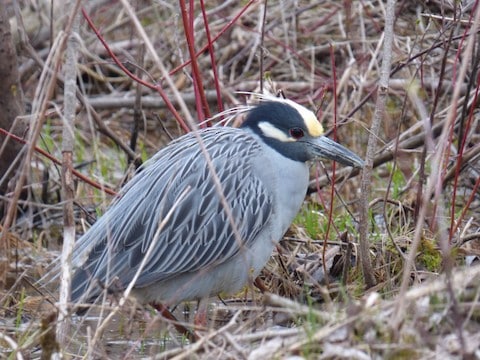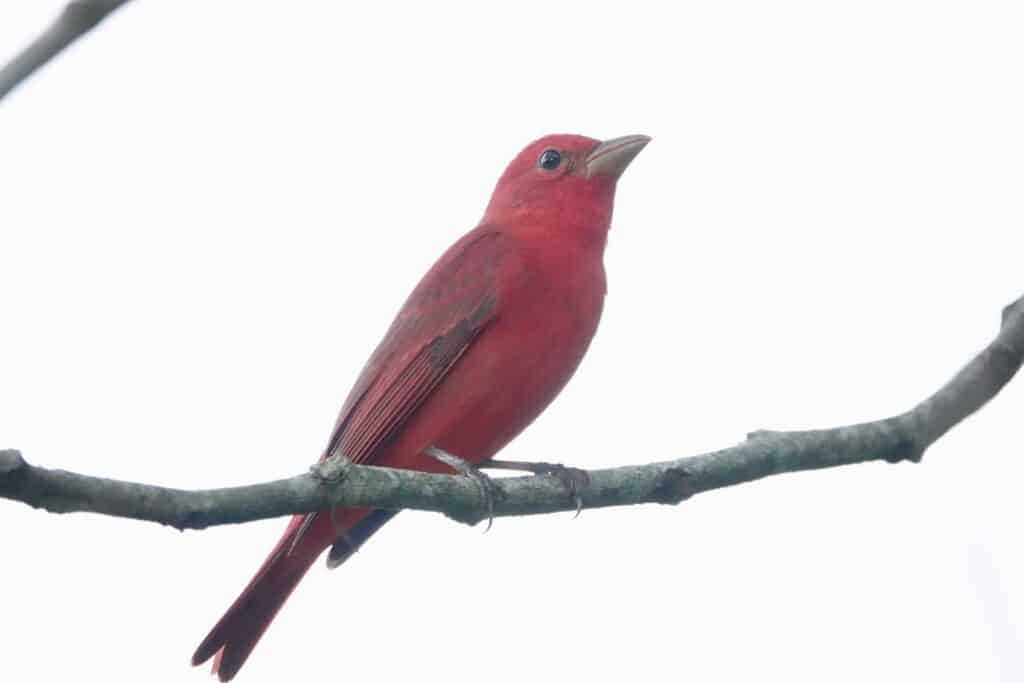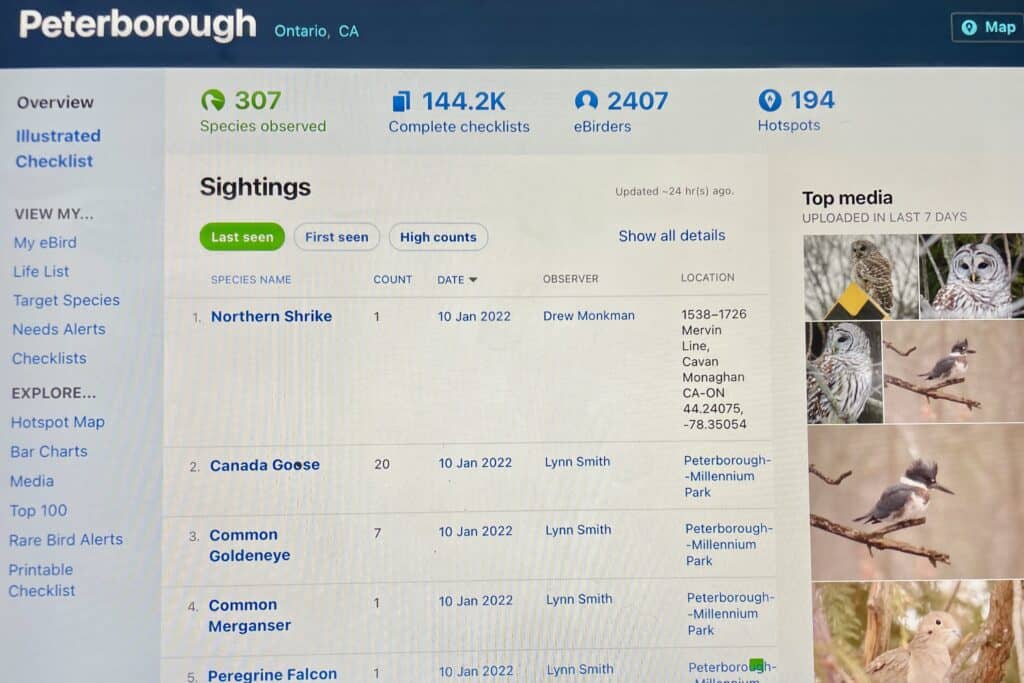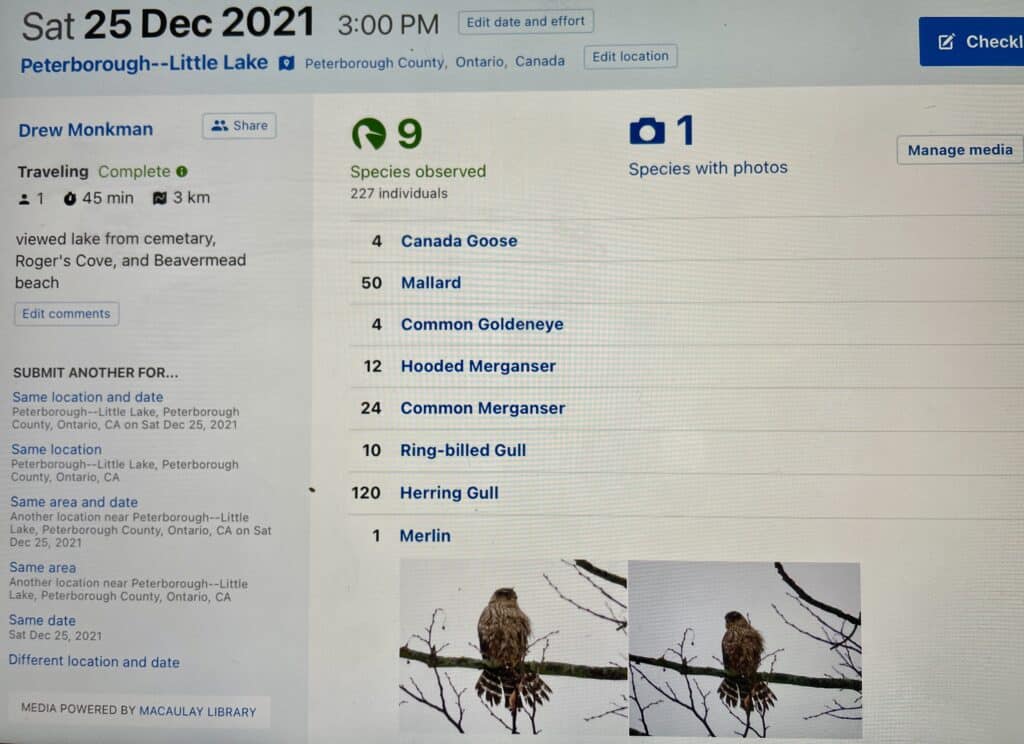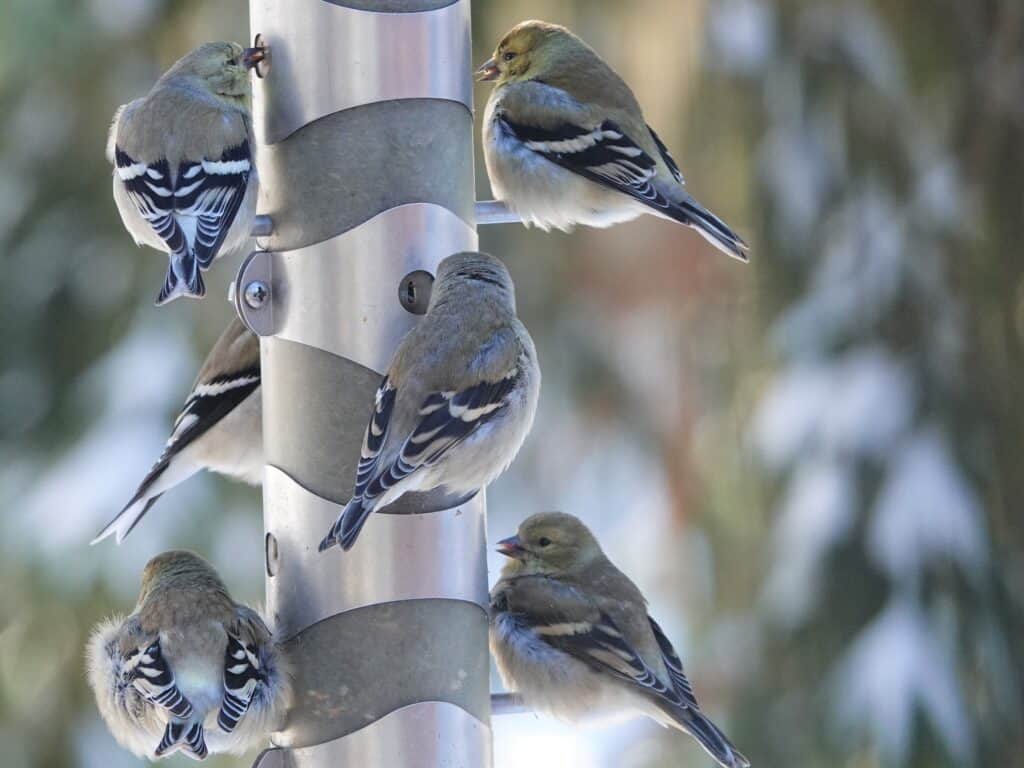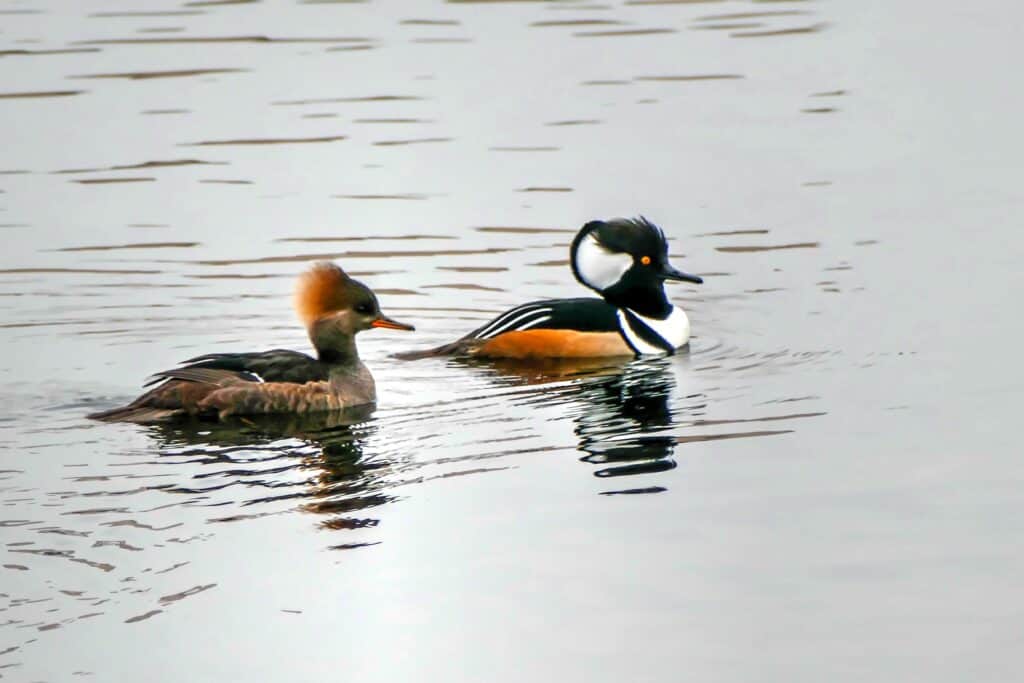Peterborough Examiner – January 14, 2022 – by Drew Monkman
A look at data from eBird and the results of the Petroglyphs Christmas Bird Count
Peterborough has one of the most active birding communities in all of Canada. This is borne out in many ways: the number of people submitting checklists to eBird, sales of bird seed at local stores, bird-related activity on social media, membership in the Peterborough Field Naturalists, and participation in Christmas Bird Counts and the Ontario Breeding Bird Atlas. This week, I’d like to provide some numbers courtesy of eBird that show the amazing diversity of bird life in Peterborough County, where people are finding the most species, and who some of the top local birders are. I’ll also include the results of the Petroglyphs Christmas Bird Count.
eBird data
eBird is an online database of bird observations which provides researchers, conservationists, and amateur naturalists with real-time data about the distribution and abundance of birds around the world. It is the biggest community (citizen) science undertaking anywhere that enlists amateurs to gather data on biodiversity.
An amazing 307 different species have been seen in Peterborough County, if you include the passenger pigeon which was last observed here on April 15, 1891. Although some of the birds on the list have only been seen once or twice, upwards of 240 can be observed most years. Some of the most interesting rarities that have shown up include swallow-tailed kite (1982), black-billed magpie (1984), broad-billed hummingbird (1989), painted bunting (1993), summer tanager (1995), glossy ibis (1997), brown pelican (2002), yellow-crowned night-heron (2020), and magnificent frigatebird (2020).
Birders refer to exceptionally good birding locations as “hotspots.” Of the 194 hotspots identified in the County, here are the top ten by number of species seen there: Lakefield Sewage Lagoons (222), Beavermead Park (195), Trent Rotary Trail (190), Pigeon Lake – Sandy Point (181), Havelock Sewage Lagoons (180, but no public access now), Gravel Pit Conservation Area (175), Trent University Wildlife Sanctuary Nature Area (173), Lakefield Marsh (170), Mervin Line (169), and Little Lake (168). So far this winter, the top hotspots have been Little Lake and the surrounding shoreline, Peterborough Airport including Moncrief Line, Rotary Park, the Otonabee River between Lock 25 and Lakefield, and Lake Katchewanooka. It should be noted that many species are tallied at hotspots only during migration.
An astounding 2,407 different people have contributed to the 144,000 checklists submitted to eBird for Peterborough County. As for the top “eBirders” by the number of local species seen, they are Don Sutherland (278), Geoff Carpenter (272), Luke Berg (260), Dave Milsom (259), and Colin Jones (258). Of the top 100 local eBirders, even number 100 has seen 146 species.
If you have an interest in birds, I strongly recommend joining eBird at https://ebird.org/home and downloading the app. If you click on the Help button on the website, you’ll find all the necessary information to get started.
Petroglyph Count
The 35th Petroglyph Christmas Bird Count took place on December 30 and proved to be a memorable occasion. “It was an excellent day to be out birding, and we broke a new record for diversity of species and for the total number of individual birds,” said count organizer, Colin Jones. “It was calm throughout most of the day which made for excellent listening conditions. There was also open water on some lakes (normally not the case), so a few species of waterbirds were detected. An excellent diversity of winter finches turned up, too,” he added.
The 37 participants found a record 41 species which was well above the 10-year average of about 32. The 3,944 individual birds counted was 12 more than the previous record. As for new count species, a hermit thrush was spotted for the first time ever. Participants also recorded five species in record-high numbers, namely the rock pigeon (156), common loon (4), winter wren (5), American goldfinch (727), and common redpoll (537).
There were also much higher-than-average numbers of white-breasted nuthatches (194), downy woodpecker (52), and red-tailed hawk (9). Two notable species that are rarely found on the count were a single hooded merganser and seven common mergansers. As for winter finches, nine species were tallied: evening grosbeak (69), pine grosbeak (12), purple finch (19), common redpoll (537), hoary redpoll (1), red crossbill (84), white-winged crossbill (133), pine siskin (135), and American goldfinch (727). Last year, only 17 goldfinches were spotted. This nomadic species’ movements in winter are closely tied to wild food supply. An abundance of tree seeds, including birch, probably explains their abundance this year. Completely absent on last year’s count were hoary redpoll, purple finch, and both crossbill species.
Two species that showed up in very low numbers this year were blue jays and mourning doves. The 95 jays counted was well below the 10-year average of 282. Only two mourning doves put in appearance. This species has been recorded on every count since 1995 with a 10-year average of 7.3 and a count high of 93.
Two birds that were missed entirely on the count were Canada jay and black-backed woodpecker. This northern woodpecker used to be found nearly every year but has only been recorded three times over the past 10 years. The Canada jay, too, used to be found annually. As its range retreats northward as a result most likely of climate change, this iconic species has only been seen four times on the count in the past 10 years.
The species totals for the Petroglyph Count are as follows: hooded merganser (1), common merganser (7), ruffed grouse 36, wild turkey (18), rock pigeon (156), mourning dove (2), herring gull (1), common loon (4), golden eagle (1), bald eagle (2), red-tailed hawk (9), barred owl (9), downy woodpecker (52), hairy woodpecker (72), pileated woodpecker (27), northern shrike (1), blue jay (95), American crow (15), common raven (106), black-capped chickadee (1024), red-breasted nuthatch (177), white-breasted nuthatch (194), brown creeper (21), winter wren (5), golden-crowned kinglet (12), hermit thrush (1), American robin (3), European starling (28), bohemian waxwing (16), evening grosbeak (69), pine grosbeak (12), purple finch (19), common redpoll (537), hoary redpoll (1), red crossbill (84), white-winged crossbill (133), pine siskin (135), American goldfinch (727), snow bunting (1), American tree sparrow (35), and dark-eyed junco (81).
To see a map of the count circle, which is centred on Petroglyphs Provincial Park, go to https://tinyurl.com/ptzvaes2
CLIMATE CHAOS UPDATE
ALARM: In a report published Jan. 10 by the EU’s Copernicus Climate Change Service, last year was the world’s fifth hottest on record. Levels of planet-warming carbon dioxide (see tracker below) and methane in the atmosphere also hit new highs in 2021. The report also stated that the last seven years were the world’s warmest “by a clear margin” in records dating back to 1850. The hottest years on record were 2020 and 2016.
In Peterborough, 8 of 12 months in 2021 were warmer than the 1971-2000 normal. In fact, this same 2:1 ratio of warmer-than-average vs cooler-than-average months is true for the past 11 years. Among the warmest months in 2021 in Peterborough were January (3.3 C warmer), November (5 C warmer), and December (4 C warmer). None of the three cooler-than-average months were more than 0.8 C cooler.
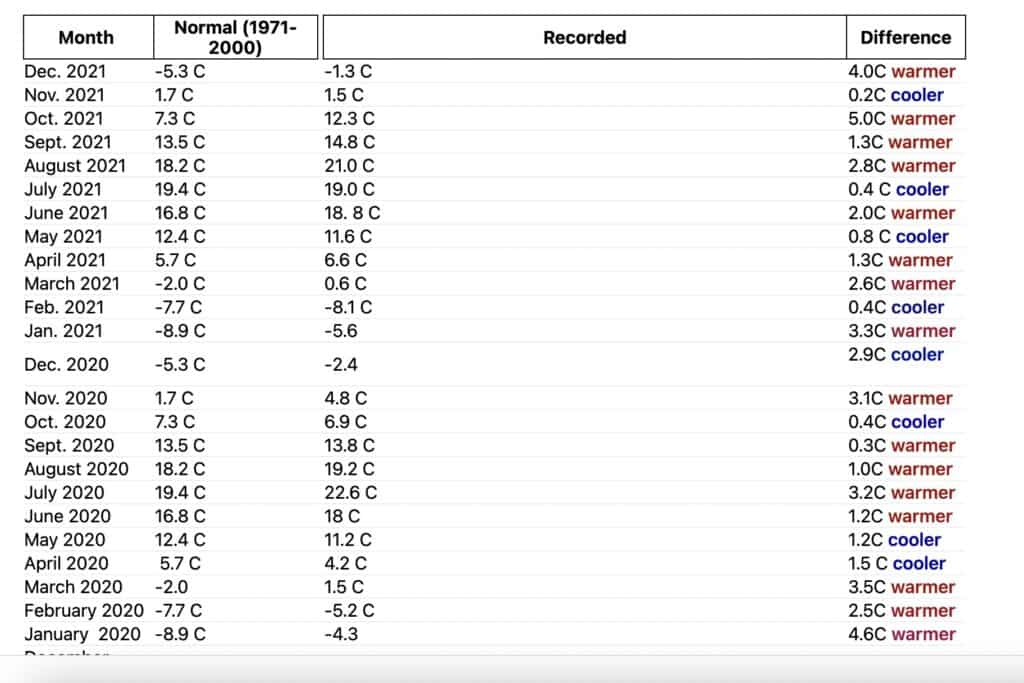
CO2: A key measure of how much climate progress the world is making is the amount of carbon dioxide (CO2) in parts per million (ppm) in the atmosphere and whether it is rising. The pre-industrial level was 280 ppm and the highest level deemed safe is 350 ppm. The graphic below shows the alarming current readings.
TAKE ACTION: To see a list of ways YOU can take climate action, go to https://forourgrandchildren.ca/ and click on an ACTION button.
